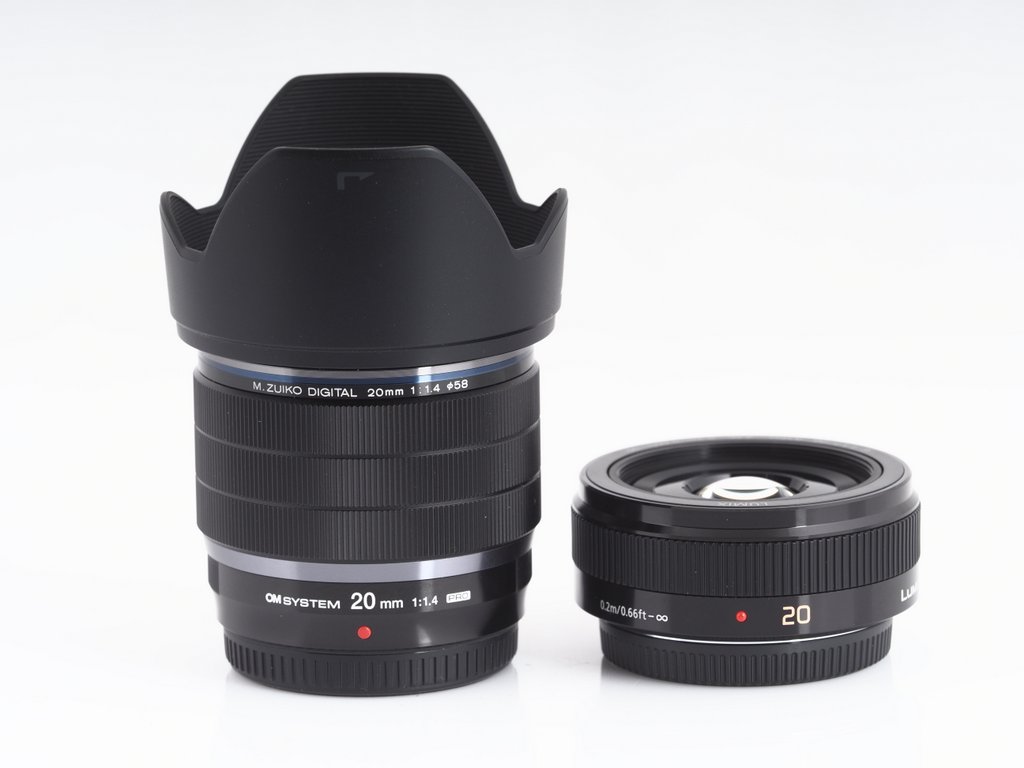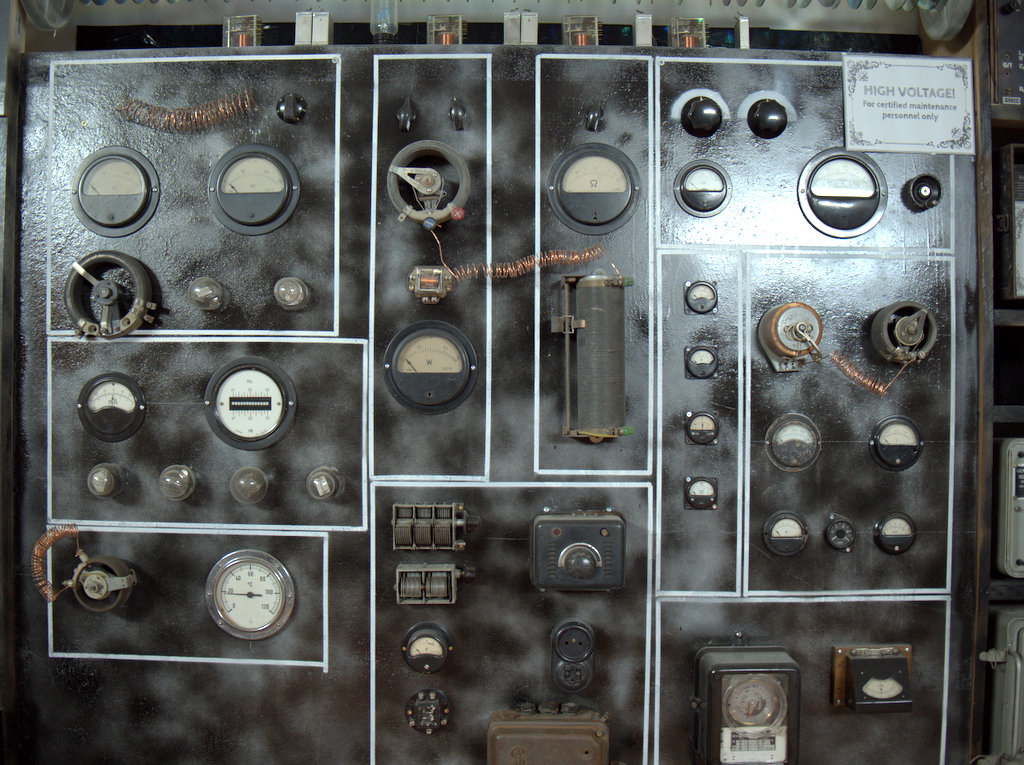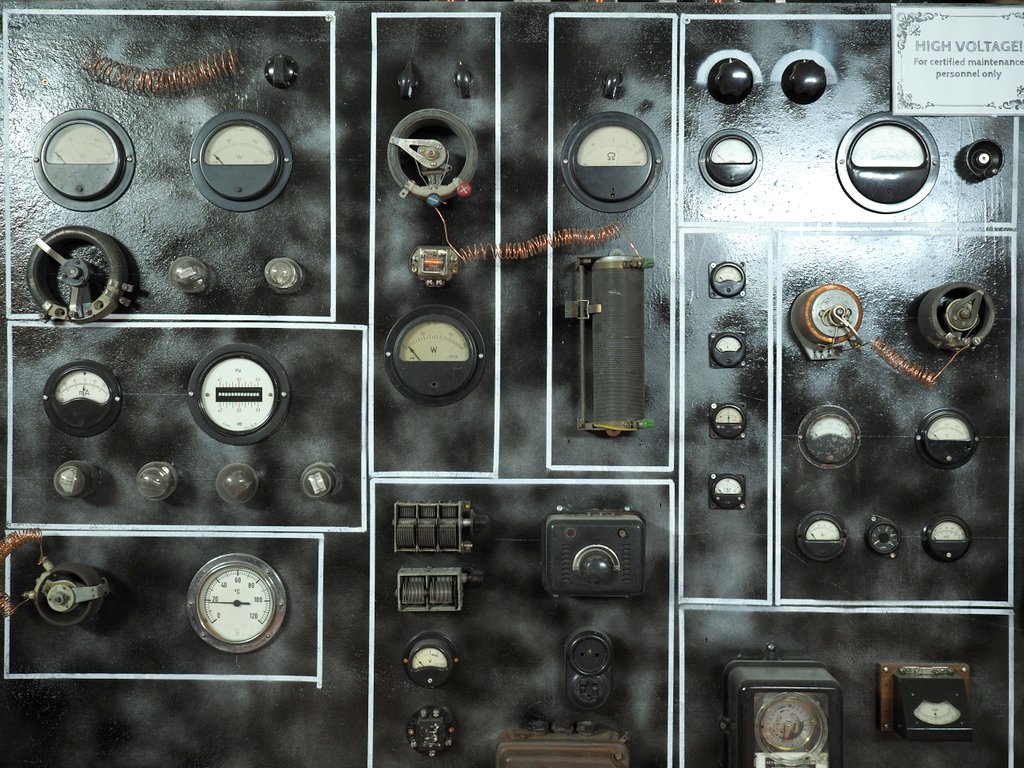
In the mFT system, there has been a fast 20mm almost since the beginning. The Panasonic 20mm f/1.7. It is actually offered in version 2. And Panasonic sent it to me.
We shot part of this video with the 20mm Pana anno 2010 with the Olympus E-P2:
The E-P2s were not yet capable of Full HD and their sensors did not have the reserves of the E-M5’s 16MP sensor. You can see exactly which scenes were shot with the 20mm f/1.7 – they’re blown out. To make it look intentional I changed the color, I couldn’t do without the out of camera snippets at the time. I couldn’t figure it out and later tried around and found that the dynamic range of the images shot with the 20mm was lower. At the time I blamed it on the lens, no one could explain it to me, or the “specialist” I asked told me that was the case with some lenses, that they could just transmit a lower dynamic range. I believed him because my measurements showed about two-thirds aperture lower dynamic range in RAW.
In reality, it was a combination of “sharpness optimization” and insufficient speed. The lens is not 1.7, but rather 2.0, and the third of an aperture that is missing is brightened by the image processor. This is devastating for the sensor of the E-P2, which was sewn to the edge anyway.
So much for that. The Zuiko 1.4 is 1.4, the Pana-Pancake almost one stop slower. The point goes to OMDS.
The distortion in RAW: the Pana is known to have a barrel:

The Zuiko is much more peaceful:

And this is how the wall looks in the corrected JPG:

By the way, the Pana has a much wider angle of view.
The problem is that resolution is lost when the edges are blown up. And you can see that in the corners – in the center, the very high-contrast Pana appears sharper and crisper, while the Zuiko is clearly ahead at the edges.
So in terms of image quality, the Zuiko is also ahead.
It has been known for a while that the AF of the Pana 20mm is not a hit. Here, too, the pancake doesn’t make a stab.
Next discipline: lens flares. The Zuikos currently claim to be quite insensitive. But here’s the Panasonic for now. From left to right: open aperture, f/2.8, f/8, f/16

And here the Zuiko:

Both lenses at identical camera settings, camera on studio tripod and only the lens changed. Exposure compensation -1. Mode A. The Panasonic required 1/3 longer exposure at the same exposure compensation, as you can see, it then also exposed brighter – this was perhaps due to the larger angle of view.
The Panasonic doesn’t have the noticeable flare in the lower right corner, which still stands out at f/16 on the Zuiko, but the aperture star is spooky. This indicates that the aperture is not cleanly manufactured.
Of course, these flares are deliberately provoked and hardly so visible in normal use.
Last test: The bokeh.
20mm is not the focal length where you expect a killer bokeh. Of course, this is also possible for portraits in the streets at night, but you have to get extremely close.


There is no need for labeling. Yes. The Zuiko above, the Panasonic below.
Bottom line: the Pana pancake was the fastest lens for mFT back when Olympus was still peddling the 17mm f/2.8 – also a pancake. That was more than a decade ago now, and considering that, the Pana does very decently. If you then consider that the Zuiko goes for 699 euros over the counter and for the Pana 259, – are called…
Oh yes, of course the m.Zuiko is also weatherproof and a lens hood is included, which would also do the Pancake a lot of good, because the Pana is very sensitive to stray light. Oblique light on the front lens causes a dramatic drop in contrast.
“Das Pana-Pancake war seinerzeit das lichtstärkste Objektiv für mFT, als Olympus noch mit dem 17mm f/2,8 hausieren ging – auch ein Pancake. Das ist jetzt mehr als ein Jahrzehnt her und wenn man das berücksichtigt, schlägt sich das Pana sehr anständig.”
Sehe ich genau so 😉
In Kombination mit der PEN-F ist das Pana für mich eine ideale Kombi, passt (fast) in jede Tasche, eigentlich immer dabei. Kann ich nur empfehlen!
LG + bleibt alle gesund!
Der Bildeinruck bei 20mm (mFT) ist für mich perfekt. Es entspricht dem Blick im vorbeigehen, minimal geweitet. Daher war das alte Lumix 20mm/1.7 in den ersten mFT-Jahren mein “Immerdrauf”. Es harmoniert gut mit den kleineren Olympus-Kameras, wie den PENs oder der M10. Mit einer kompakten (faltbaren) Streulichtblende passt es gut in die Jackentasche. An den größeren Kameras geht diese Harmonie verloren. Da gibt es bessere Partner – aber die passen sowieso nicht mehr in die Jackentasche.
Beste Grüße, Andreas
Deine Einschätzung zu diesem Bildeindruck kann ich nur teilen, Du hast ihn wunderbar formuliert.
Das Thema mit den 20mm mFT aka 40mm KB hatten wir hier vor kurzem schon mal (Rollei 35) und er ist besser einsetzbar, als manche glauben. Die Aussagen von Ikonen der Fotografie wie Henri Cartier-Bresson (“bei einem Objektiv bleiben”) oder Robert Capa (“wenn deine Bilder nicht gut genug sind, warst du nicht nah genug dran”) sind Gemeinplätze und uns allen bekannt. Sie alle kreisen um deren bevorzugte Brennweite von 50mm KB, zweifellos aus damaligem Mangel an lichtstarken Varioobjektiven geboren, aber kreativ wegweisend für Legionen von Epigonen.
Ich glaube, dass 40mm Fixfokus lichtstark noch universeller einsetzbar ist und in Form der Pancakes die große Domäne von mFT kristallisiert: unübertroffene Portabilität, Unauffälligkeit, Mobilität bei sehr guter Systemleistung.
Genau das sollten wir uns immer vor Augen halten, wenn demnächst die neue WOW wieder im Apfel-Birnen-Vergleich mit Canikon filetiert werden wird.
Bezüglich dieses Bildwinkels (ca. 40mm KB) ist anzumerken, dass nicht nur Olympus/OMDS im Jahr 2021 endlich aufgewacht ist. Auch bei Ricoh hat sich etwas getan: Die Ricoh GR IIIx hat nun auch diesen Bildwinkel. Dabei ist sie – trotz eines APS-C-Sensors – noch kleiner als die Olympus Pen-F.
Warum gibt es denn bloß keine MFT-Kamera, die so ähnlich ist wie die Ricoh GR IIIx?
Die Ricoh GR III(x) hat ja eine kleine Fan-Gemeinde, noch mehr aber hat Fujifilm mit der X100V (als 35 mm KB) einen Volltreffer gelandet. Das Teil verkauft sich wie blöde und ist gebraucht überaus wertstabil. So eine Kompakte vermisse ich auch bei mFT und speziell bei Olympus respektive OMDS, wo es ja als KB-Sucherkamera auch einige Ausführungen gab.
Zur Brennweite an sich: diese Brennweite mag ich ebenfalls sehr, ebenso die gute alte Reportagebrennweite von 35 mm KB. Bevor sich 50 mm als “Normalbrennweite” durchgesetzt hatte, waren beide ja mal recht verbreitet. An einer abgedichteten Kamera mit Klappdisplay – nicht seitlich schwenkbar – perfekt für Street…
Volle Zustimmung!
Warum 40 mm KB so ungewöhnlich oder vergessen sein soll, kann ich ja nicht nachvollziehen. Jedenfalls wird diese Brennweite auch in der aktuellen “ct Fotografie” thematisiert, Zitat: “Mit 40 Millimetern Brennweite will eine wiederentdeckte Objektivklasse Fotografen für sich begeistern”.
Die Argumente dazu werden zwar genannt, aber Beispielbilder kaum gezeigt. Hauptsächlich werden einschlägige Messungen diskutiert, langweilig. Neben Nikon und Sony mit Kameras werden auch das Voigtländer 40 mm f/1.2 und Sigma 40 mm f/1.4 (was für ein Riesentrumm) sowie die Ricoh GR III x besprochen.
Leider nicht online zu lesen: https://www.heise.de/select/ct-foto/2022/2